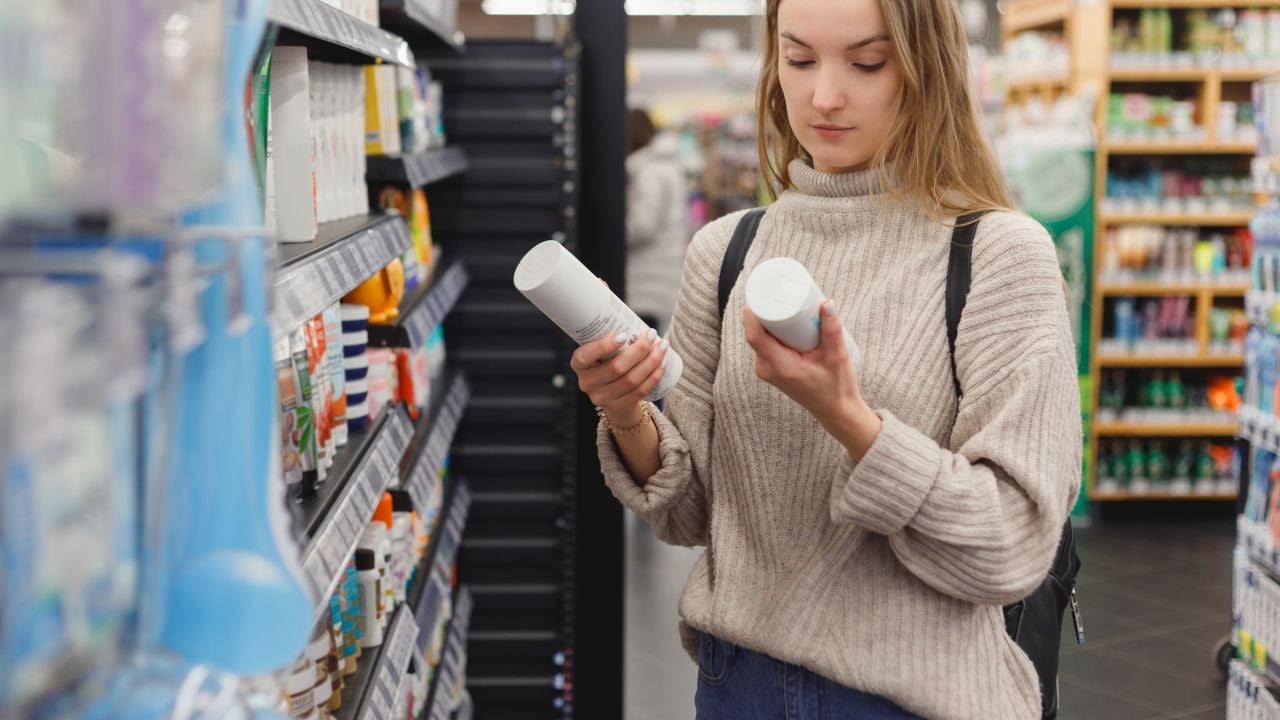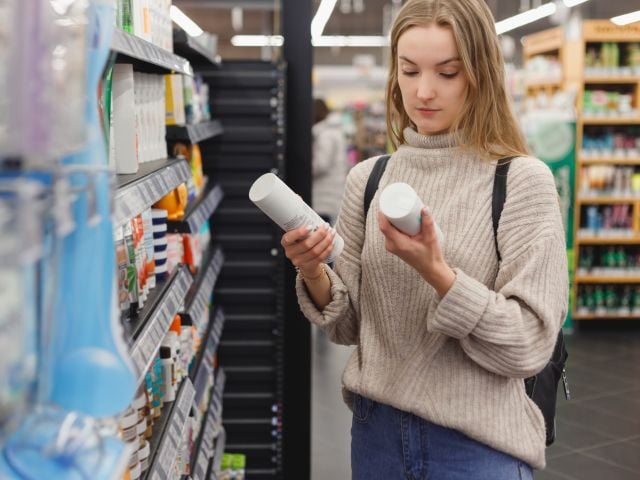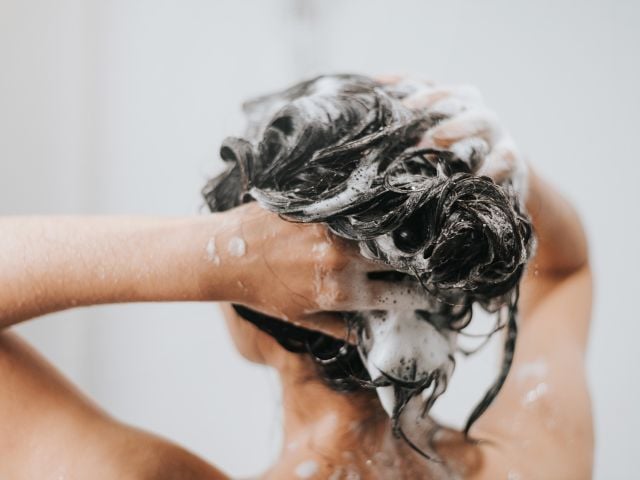
A head of clean, healthy hair is a sign of basic self-care for many Americans. But some products might contain ingredients that can increase your exposure to toxic chemicals.
EWG’s 2023 cosmetics survey showed about a third of respondents use shampoo every day, and nearly that many – 30 percent – weekly. That’s a lot of shampoo over a lifetime, adding up to significant repeat exposures to whatever the products contain.
If you’re looking to reduce your lifetime exposure to toxic chemicals, check product ingredient labels and try to avoid buying those with any of the following four.
1. The worst offender: Undisclosed fragrance
By far the most common problematic ingredient in shampoo is undisclosed fragrance, according to Skin Deep®, EWG’s free, searchable cosmetics database. Almost all of the roughly 4,100 shampoos in the database contain this blend. By contrast, the next most common unsafe ingredient shows up just a few hundred times.
“Fragrance” is an undisclosed, mystery cocktail of 20, 50 or even 100 chemicals from a roster of about 3,500 chemicals. Consumers are typically in the dark about fragrance ingredients, because companies can list the concoction as “parfum” or “perfume,” “fragrance” or “aroma,” without specifics.
Some are phthalates, such as diethyl phthalate, which are used to extend the scent of undisclosed fragrance ingredients and make them last longer.
They are used in a wide range of consumer products as “plasticizers.” In shampoo, they serve as a gelling agent.
Exposure to these chemicals is linked to health problems such as disruption of the hormone system. Phthalates can also harm the reproductive system.
Diethyl phthalate is banned in personal care products by states, including California, Maryland and Washington.
Other undisclosed fragrance chemicals are linked to allergic reactions. But the Modernization of Cosmetics Reform Act enacted in 2022 will soon require labeling of fragrance allergens.
Look for: “diethyl phthalate” on the product label or products.
2. Lily aldehyde
Lily aldehyde, also known by the trade name Lilial, is used to impart the scent of lilies. It’s been linked to allergic reactions, skin irritation and hormone disruption, interference with the hormone system and a risk to fertility and fetal development.
A California ban on lily aldehyde will take effect in 2027. Lily aldehyde has also been banned in Europe, because of studies that show it can cause cancer. In the U.S., the Food and Drug Administration has identified the ingredient as one of the most common fragrance allergens present in cosmetic products – though it has yet to regulate it.
Look for: “Lily aldehyde” or “Lilial” on shampoo labels.
3. Cocamide dea
Do you worry your shampoo isn’t getting your hair clean if it doesn’t produce suds?
One of the ingredients that helps shampoo lather up is cocamide dea, a modified form of coconut oil. But there’s strong evidence it can be irritating upon contact, and the state of California says it can cause cancer.
Look for: “cocamide dea” on the ingredients label.
4. Parabens
There are many kinds of parabens, used to extend the shelf life of a wide range of consumer products, including shampoo. They guard against fungi and the growth of bacteria, especially in products with a high water content, which includes shampoo.
But parabens also mimic and threaten the hormone system, potentially leading to reproductive disorders, obesity, an impact on birth outcomes and an increase in the risk of hormone-related cancer.
The most common paraben in shampoo, according to Skin Deep, is propylparaben. This chemical is also used in food, though that will likely change in coming years, thanks to a 2023 EWG-sponsored law that bans propylparaben from food in California.
Look for: “paraben free” on the shampoo label.
Why are these chemicals still in shampoo?
The presence of these chemicals in any consumer products shows the federal government’s failure to protect us.
Some states are stepping into the regulatory gap. California’s 2020 Toxic-Free Cosmetics Act banned 24 harmful chemicals, including the “forever chemicals” known as PFAS and some parabens and phthalates, in personal care products. For some of the chemicals, the ban takes effect on January 1, 2025. A 2022 California law banned intentionally added PFAS from cosmetics as of January 1, 2025.
A 2023 update to the 2020 Toxic-Free Cosmetics Act banning 26 additional harmful substances, including some artificial colors and lily aldehyde, will take effect in 2027.
Because of the huge size of California’s economy, many companies are likely to reformulate their products in light of these bans, then sell the new versions nationwide.
In the meantime, our EWG Verified® program can help in your hunt for shampoo without toxic ingredients. When you shop for personal care products, look for the EWG Verified mark, which signals the product meets our strictest standards for your health and is free from chemicals of concern.
Or download our Healthy Living App to use on the go to track down products in Skin Deep that score a 1 or a 2 – low hazard – in addition to those bearing the EWG Verified mark.



